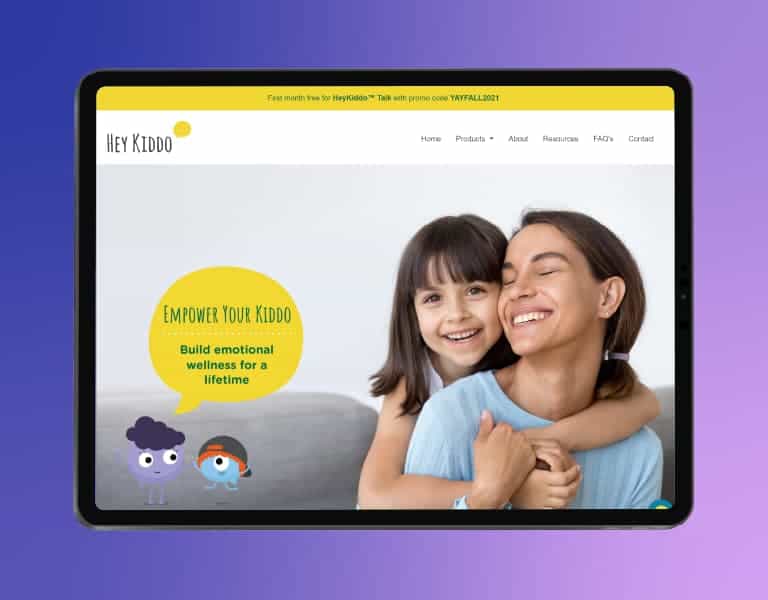
What Is A Go-To-Market Strategy?

It’s the middle of summer, and you’ve finally closed your laptop to begin your much-needed vacation. You grab your swimsuit, a few changes of clothes and the car keys. You’re taking a road trip to the beach – one you’ve only ever seen in pictures.
Given that you’ve never been to this beach, much less driven the road to get there, it’s unlikely your first move will be simply getting in the car and driving. It’s much more likely that you’ll plug the destination into your GPS first. Once you know your route, you know your chances of successfully reaching the beach are pretty high.
Planning a go-to-market strategy ahead of a product launch is similar to mapping a route on a GPS. You don’t want to simply launch the product without planning your route to market. You’ll want to know your path forward before cranking the ignition.
Go-To-Market Strategy, Defined
So, what exactly is a go-to-market strategy?
Also known as a GTM, a go-to-market strategy is a plan that helps you identify your ideal customers, nail down your messaging and position your product for launch. Executed correctly, a GTM aligns stakeholders and establishes a clear timeline for meeting objectives. Essentially, it’s your roadmap to delivering your product or service to the end customer.
Why Do I Need A Go-To-Market Strategy?
If you’re launching a new product, building on an existing one or testing a new product in a new market, you need a GTM strategy. A solid go-to-market strategy is especially important for companies in the B2B space.
Building a GTM strategy is key to ensuring your product or service hits the right audience with the right messaging – at the right time. Without understanding your competitive landscape or the appetite for your product, there’s a good chance that your launch will fall flat.
You’ve poured blood, sweat and tears into creating the perfect product. Now, it’s time to get your customers to love it as much as you do.
How To Build A Go-To-Market Strategy
Follow these 10 steps to build a robust go-to-market strategy.
1. Identify the problem your product solves.
The key to any great product is that it solves a specific problem. Before buying your product, your customers will ask themselves: “What’s in it for me?” Clearly identify how your product will benefit their lives in a way that your competitors’ products can’t.For example, Airbnb offered customers flexible, affordable alternatives to hotels. Uber gave people the ability to avoid hailing a taxi and call a personal ride right to their doorstep. These products found a customer pain point and offered in-demand solutions. This concept is what’s known as product-market fit.Product-market fit is the degree to which a product meets market demand. Understanding product-market fit is vital to ensuring you’re launching the right product to the right audience.
2. Define your target audience.
Now, it’s time for you to identify your ideal customers. Who’s experiencing the problems your product solves?Start by creating an ideal customer profile (ICP). These are the people who are experiencing a problem, are looking for a solution and can pay for it.
Consider the following characteristics:
- Industry or demographic: If you’re selling to businesses, identify your target industry. If you’re selling to people, consider what kind of person you’re selling to. For example, an e-learning software provider may target parents between the ages of 28-35 or educators who work with children aged five to 12.
- Geography: Where do your ideal customers live? Are you targeting customers in multiple parts of the world or specifically focusing on one?
- Size: If you’re selling to B2B companies, you’ll want to know the size of the business you’re targeting. Is it a small startup with 20-ish employees? Is it a global company with headquarters across the world?
- Budget: How much will your customers need to spend to buy your product? Your price point will also determine how your product is perceived in the market. If you’re selling a luxury product, for example, your customers should be willing and able to buy at a higher price than a standard product.
- Decision-making factors: Determine how your customers decide on the products they buy. Maybe they only take referrals from friends or family. Or perhaps they’re more likely to buy products they see on Facebook ads.
- Pain points: What’s keeping your customers up at night? What makes them feel frustrated?
- Preferred media: Your ideal customer has a preferred method for being reached. Do they prefer email, social media, print magazines?
Once you’ve identified your ideal customer profile, you can start brainstorming your buyer personas.
A buyer persona is a detailed profile that describes a segment of the population from your ICP. Each of your customers is unique, with their own set of motivations, goals and problems. You’ll want to fully understand each of these customers before you sell to them, so creating multiple buyer personas for several segments of your target audience is ideal.
Here’s an example of a buyer persona for a technology entrepreneur.
Entrepreneur
- Individual between 28-45 years old
- College degree: Bachelor’s or Master’s
- Operates globally
- Responsibilities include building a team, creating a business plan and carrying out core operations to hit growth targets
- Frustrated with the cumbersome onboarding process. This person needs a streamlined system for recruiting and onboarding new team members to scale their business.
3. Get to know your competition.
There are competitors out there who are capturing your ideal customers with similar products. Conduct a competitive analysis to discover your competitors, as well as their strengths and weaknesses in relation to your own.
4. Research demand.
The last thing you want is to go to market and realize there’s no demand for your product. You’ll need to ensure the market isn’t oversaturated – and that there is actual customer demand – before launching your product.
5. Craft your key messaging.
Now, you’ll need to determine how to reach your ideal customers with powerful, resonant messaging. It’s best to tailor individual messaging for each of your buyer personas to address their unique values and frustrations.
6. Map out the buyer’s journey.
The buyer’s journey is the path customers take from acknowledging their pain point, considering your product as a solution, to finally deciding to purchase. Mapping out the buyer’s journey helps you present the right type of content to the right people at the right time, increasing the chance they’ll buy from you.
7. Choose your marketing channels.
Now that your key messaging is nailed down, you’ll need to find out where to put it. That means choosing the proper marketing channels, whether that be email newsletters, social media, paid ads or blogs. This will depend on your ideal customer and their communication preferences. It will also depend on where your potential customers are along their buyer’s journey.
8. Create your sales plan.
Next, create a sales plan to strategize how to turn prospective customers into buyers. Your plan will outline the best way to sell to your target audience and keep them returning as loyal customers.
9. Set SMART goals.
When you set a goal, make it smart. SMART stands for specific, measurable, achievable, realistic and timely. Setting a general goal, such as “We will have new app downloads and users,” doesn’t give you a clear timeline for achieving that goal. A SMART goal, on the other hand, would say something like: “In six months, we’ll have 10K app downloads and 50K new users.”
10. Create clear processes and workflows.
Launching a GTM strategy, especially if this is your first time, is a clunky process. You’re bound to run into hiccups here and there, which is completely normal. However, you can avoid major pitfalls by documenting your processes to ensure your team is always on the same page. Find your rhythm with a project management tool that enables you to track progress, communicate clearly and automate workflows whenever possible.
Unfortunately, crafting a great GTM strategy isn’t as leisurely as taking a trip to the beach. But following these 10 steps can certainly make the process easier. What’s more, if it still seems daunting, finding a team of dedicated professionals to help you build the perfect strategy isn’t a bad idea. Either way, you’ll be prepared for launch and to take the market by storm.

























